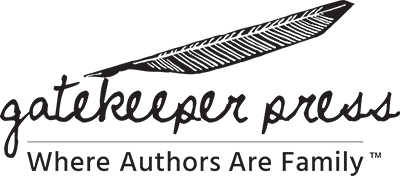Wondering how to self publish a children’s book published for the first time? Look no further! Whether you write picture books, middle-grade novels, or something in between, use these helpful tips to take your children’s story from manuscript to published book.
The ABCs on How to Self Publish a Children’s Book
Do Your Homework on Industry Standards
Before getting a children’s book published, it never hurts to research publishing industry standards for your genre. You can check out illustration styles, book title ideas, common book dimensions, and thematic trends by browsing best-selling children’s books at a brick-and-mortar bookstore.
Typically, illustrated children’s book dimensions vary from 7ʺ × 10ʺ to 10ʺ × 8ʺ to 5ʺ × 8ʺ and finally 8.5ʺ × 8.5ʺ. In other words, you can choose to make your children’s book dimensions either horizontal, vertical, or square depending on your artwork.

[Curious how much each size costs to publish? Click here for a free instant printing quote.]
As for word count, recommendations vary depending on the reader’s age. Keep board books for babies under 300 words, picture books for young children between 500-1,000 words, chapter books for early readers between 3,000-10,000 words, and middle-grade books for older children between 20,000-35,000 words.
Another helpful standard is that children’s picture books are traditionally 32 pages long. (This is because a single sheet of paper folds neatly into 8, resulting in an easy-to-print 32-page book.) While this page length isn’t a hard rule, it’s a tried-and-true guideline for modern picture books.
Regardless of how or where you publish your children’s book, reflecting these industry standards will ensure that your work stays professional and consistent with readers’ expectations.
Find a Children’s Book Illustrator
When it comes to self-publishing, children’s book authors usually need to hire and work with an illustrator themselves. This step may seem daunting, but it’s worth it— great illustrations breathe life into your story.
Here are 4 ways to connect with children’s book illustrators:
- Browse an illustrator marketplace. Freelance illustrators are available through publishing professional marketplaces like Reedsy and Publishers Marketplace.
- Work with a book publisher that offers illustration services. Some self-publishing service providers, including Gatekeeper Press, offer book illustration as well as cover design services.
- Check out artist portfolios. Websites like Behance and Dribbble make it easy to directly contact illustrators after viewing examples of their previous work.
- Ask children’s book author communities. Get referrals, advice, and suggestions from fellow authors and illustrators by joining a community like the Society of Children’s Book Writers and Illustrators, the Children’s Literature Association, the Children’s Book Authors/Writer’s Group, or Kidlit411.
No matter how you find a children’s book illustrator, here are some tips and best practices for your search:
- Hire an illustrator with previous children’s book experience
- Get sample pages (it’s the best way to preview how your published book will appear)
- Nail down the project scope, cost, due dates, and timeline in advance
- Pick someone whose artistic style both matches and enhances your story
Choose Your Book Format(s)
Should you publish your children’s book as a hardcover, paperback, ebook, or a combination of the three? As with all other aspects of self-publishing, you have total control as the author. Here are some things to consider:
Hardcover is a classic choice for large board books and picture books. This format is easy to hold and harder to damage thanks to its durable construction. However, keep in mind that hardcover books have the highest printing and shipping costs for the same reason.
Paperback is a common format for longer children’s books, like chapter books and middle-grade books. Because paperbacks are lighter and usually smaller than hardcover books, they are cheaper to print and ship.
Ebook may not seem like an obvious option at first, but digital children’s books are on the rise. More and more readers — children included — consume content on tablets and e-readers. This makes ebook publishing a viable and cost-effective option for children’s books.
Get an instant publishing cost estimate of your children’s book with our publishing quote estimator.
Abracadabra! Getting a Children’s Book Published is Only a Few Steps Away
Gatekeeper Press makes getting a children’s book published easy, affordable, and professional. Contact us today to schedule a free 30-minute consultation and learn more about our illustration, editing, formatting, and publishing distribution services.

